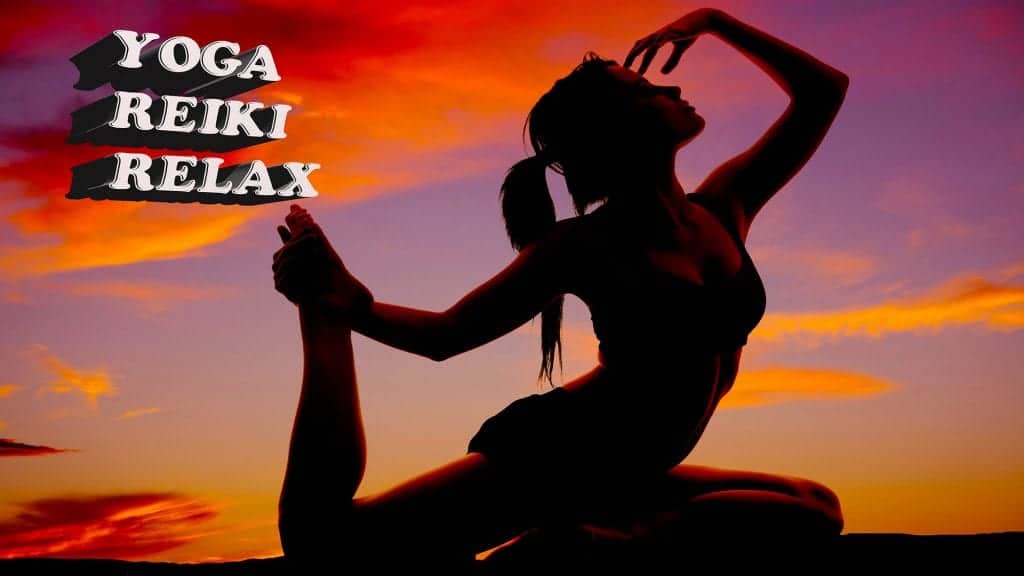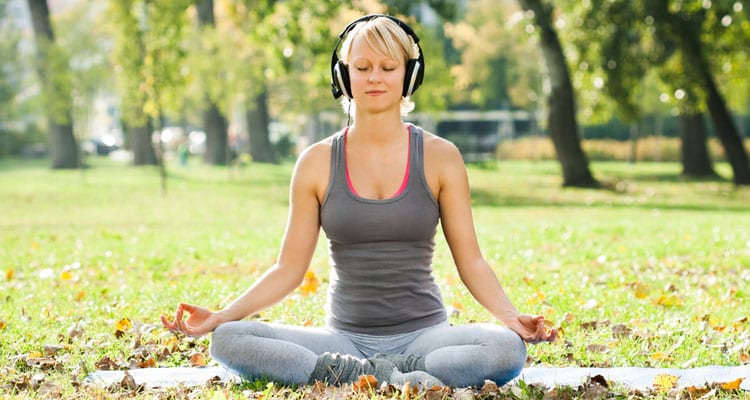
Although many might consider it a counter-sense, using music for yoga is a widespread custom.
Professional instructors of this ancient practice use soft and pleasant harmonies, in order to facilitate concentration among their learners. AND many of the more experienced practitioners also resort to certain sounds and measures, to build the best environment for your exercise routines.
An ancient discipline
Some archaeologists claim to have found evidence that yoga was practiced in Asia as early as the seventeenth century BC. This thanks to a stamp discovered in Pakistan where an anthropomorphic creature appeared sitting cross-legged.
But beyond this specific data, whose interpretation in any case is debatable, for Hindu teachers yoga is simply eternal. It always existed and it is not capable of marking a start date on the calendar. These days, there are many different options, and using music for yoga is extra motivation.
Types of yoga

Yoga is divided into several aspects, all pursuing a common central goal: the perfect body-mind communion. These are:
- Bhakti yoga: its founding doctrine is "Love god and god is love. " Those who follow this discipline consider that God is present in every conscious being.
- Hatha-yoga: this is one of the most practiced variants in the west. The body is the central tool to reach the highest level of consciousness and wisdom.
- Japa-yoga: also known as yoga with mantras. It is believed to be one of the oldest variants of this discipline. The sound vibrations, through mantras (words or phrases that are sung out loud) form its central axis.
- Jnana yoga: those who venture into this type of meditation, aspire to reach the maximum wisdom by debating the will with reason. One of your goals is to find purpose in existence and reject any illusory artifice.
- Karma yoga: practitioners and followers of this variant, They offer themselves to God without conditions and without expecting anything in return. Personal interests and attachments must be renounced.
- tantric yoga: it is usually classified as a kind of yoga of sex, although this element is only one of the parts of this practice. One of its goals is to transform physical pleasure into infinite enjoyment.
- laya yoga: Mastering the chakras, in addition to acquiring awareness of the function of each one of them, is the premise of this variant. It also seeks to inhibit the power of the mind when acting and making decisions, leaving everything in the hands of the heart.
Other variants
- Raj yoga: Some teachers classify it as the classic form of this Hindu discipline. One of his goals is to reach the divinity of the inner universe. When it comes to practicing it, his asana or traditional posture is the lotus flower.
- Kriya-yoga: It is one of the most advanced techniques to achieve mind control. Breathing is the key element in the task of reaching the highest degrees of development.
- Sahaja yoga: also known as the yoga of union with the omnipresent power of divine love. Founded by Nirmalia Srivastrava, it is one of the contemporary aspects of this ancient discipline. Through simple meditation, one seeks to achieve full awareness of the true self.
- anusara yoga: Through the empowerment of all the senses, it seeks to perceive the universe as a whole, an unequivocal symbol of divinity. Of recent creation (1997), one of its premises is “to follow the heart”.
- Kripalu yoga: also known as the yoga of self-acceptance. Recognizing and honoring the uniqueness of each person is one of its goals.
- Aerial Yoga: as its name implies, this is a practice that takes place in the air. Strengthening the breath, he combines some traditional yoga postures with gymnastics, circus art and Pilates.
What does yoga music sound like?
The use of music for yoga goes through some considerations to take into account. Two of them are the personality of each practitioner and the objectives to be pursued.
Although the ultimate goal of yoga is to achieve the perfect balance between body and mind, this does not close the door to individual goals.. Some of them can be disconnecting from the stress of the day to day, resting the mind or "turning off" the thoughts. It can also be a necessity to just calm down and relax.
Environmental or natural sounds are usually tools widely used in the granting of these objectives.. Although for many people the perfect picture of a yoga session includes a paradisiacal place under the open sky, where you can breathe fresh air, this is not always possible. For those who do not have day-to-day access to these types of environments, simulating them is a very valid option.
The sea, the rain, the howling of the wind or the chirping of birds, are some of the most used sounds.

New Age and Classical Music
Certain types of tonalities inscribed within the New Age musical are also used as music for yoga.. It is true this categorization is quite broad, but quiet chords, which start from the imitation of certain natural sounds, are those in common use.
However, For some people, these types of rhythms can become a source of distraction. The same goes for a musical genre that has been related to concentration and relaxation: classical music.
Some specialists consider that this distraction is due to the fact that this type of music is usually very entertaining in itself. Part of the exercises associated with yoga and meditation focus on isolating yourself from your environment and concentrating on your inner self. If the music is so pleasant that a lot of attention is paid to it or its chords are followed, the objectives are not reached.
Music for yoga on Spotify or Youtube
These two platforms are an obligatory reference to know the musical preferences of the public from all over the world. It also includes rankings on what kinds of songs are the most used as yoga music.
Among the preferred topics are: introspecting by Pete Kuzma, in my tribe de Eccodek and Still in time by DJ Drez.
Image sources: RELAXING MUSIC online / YouTube / Relaxing music